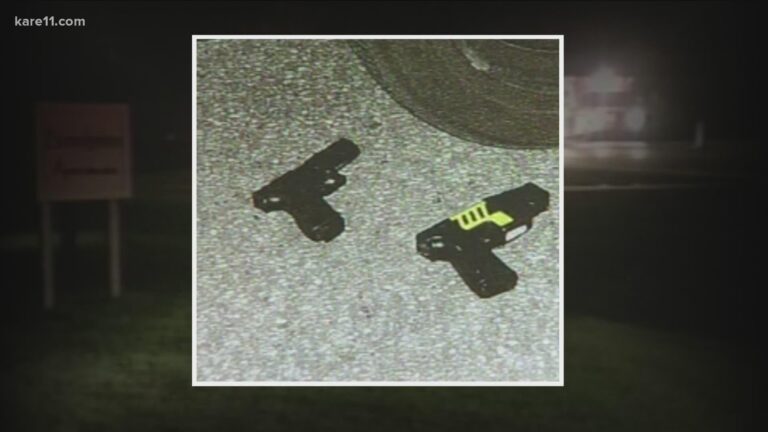Table of Contents
- Challenges in Evidence Reliability and Officer Testimonies in Stun Gun Cases
- Analyzing the Impact of Medical Evaluations and Forensic Testing on Conviction Accuracy
- Legal Strategies for Addressing Procedural Errors and Misapplication of Use-of-Force Policies
- Policy Recommendations to Strengthen Oversight and Prevent Wrongful Convictions in Stun Gun Incidents
- Final Thoughts
Challenges in Evidence Reliability and Officer Testimonies in Stun Gun Cases
Stun gun cases often hinge on key pieces of evidence whose reliability is subject to intense scrutiny. The technology involved in electroshock devices can produce data that is difficult to interpret without expert analysis, sometimes leading to contradictory conclusions about the timing and severity of an incident. Moreover, the physical evidence – such as marks on a victim’s skin or the stun gun itself – can be ambiguous or degrade over time, complicating efforts to establish clear cause and effect. These factors contribute to an environment where wrongful convictions can occur, particularly when the evidence is presented without sufficient corroboration.
Officer testimonies further complicate these cases. Often, the outcome heavily depends on their subjective accounts, which may be influenced by cognitive biases or stress during the incident. Discrepancies between officers’ reports and other witness statements frequently emerge, raising questions about the accuracy of official narratives. Key challenges include:
- Inconsistencies in recounting the use and duration of stun gun deployment
- Potential memory lapses or the influence of departmental pressures
- Lack of comprehensive body camera footage or technological recordings
Addressing these challenges requires a combination of technological advancements, rigorous standards for evidence interpretation, and heightened scrutiny of testimonial credibility to safeguard against wrongful convictions in stun gun-related prosecutions.
Analyzing the Impact of Medical Evaluations and Forensic Testing on Conviction Accuracy
In stun gun cases, the role of medical evaluations and forensic testing is pivotal to ensuring that convictions are based on accurate, scientifically supported evidence. Advanced forensic techniques enable experts to distinguish between injuries caused by stun guns and those inflicted through other means, reducing the potential for misinterpretation that often leads to wrongful convictions. Medical assessments provide critical insights into the physiological effects of stun gun exposure, which can vary widely depending on factors such as dosage and the victim’s health condition. These evaluations not only clarify the nature of the injuries but also help corroborate or challenge witness testimony, ensuring a more robust judicial process.
Key benefits of integrating thorough medical and forensic analysis include:
- Greater accuracy in linking physical evidence to stun gun use
- Enhanced ability to identify false or exaggerated claims
- Improved expert testimony grounded in scientific data
- Reduction in reliance on circumstantial or anecdotal evidence
When these methodologies are rigorously applied, they create a safeguard against wrongful convictions, promoting justice and protecting the rights of the accused. However, it remains crucial that forensic experts stay updated with evolving stun gun technologies and medical protocols to maintain the highest standards of evaluation in this complex area of law enforcement and judicial review.
Legal Strategies for Addressing Procedural Errors and Misapplication of Use-of-Force Policies
When contesting a wrongful conviction linked to stun gun use, legal teams often focus on meticulous review of procedural anomalies during the arrest or trial phases. These errors can include mishandling of evidence, failure to obtain proper warrants, or violations of due process that undermine the validity of the conviction. Highlighting such procedural lapses can pave the way for motions to suppress evidence or even successful appeals, especially when the initial investigation or prosecution relied heavily on contested use-of-force justification.
Equally important is scrutinizing how law enforcement agencies apply their own policies on stun gun deployment. Attorneys frequently challenge cases where the use-of-force standards were misinterpreted or inconsistently enforced. Successful arguments may rest on demonstrating that officers deviated from established protocols, such as:
- Exceeding necessary force without proper escalation steps
- Failing to consider less harmful alternatives prior to stun gun use
- Inadequate documentation that obscures accountability
Policy Recommendations to Strengthen Oversight and Prevent Wrongful Convictions in Stun Gun Incidents
To mitigate the risks of wrongful convictions in stun gun-related cases, it is essential to institute comprehensive oversight mechanisms that enforce strict protocols for evidence collection, handling, and interpretation. Law enforcement agencies should adopt standardized guidelines emphasizing the importance of documenting stun gun deployment with clear video and audio recordings, alongside precise timing logs. Additionally, training programs must be enhanced to ensure officers understand both the capabilities and limitations of stun guns, preventing misapplication and misjudgment in the heat of confrontations.
Policy reforms should also promote the integration of independent review boards tasked with evaluating cases where stun guns are involved, focusing on safeguarding civil rights and verifying procedural integrity. Incorporating multidisciplinary expert panels-including forensic analysts, legal professionals, and medical practitioners-can provide balanced assessments to preclude biased or incomplete investigations. Key recommendations include:
- Mandatory body-worn cameras with unedited footage retention to ensure transparency.
- Regular audits of stun gun deployment reports by external agencies.
- Enhanced legal safeguards requiring prosecutors to disclose all evidence related to stun gun use.
- Community engagement initiatives designed to educate the public and law enforcement about stun gun implications and rights protection.
Final Thoughts
In confronting the challenges posed by wrongful convictions in stun gun cases, it is clear that careful scrutiny, robust legal advocacy, and advancements in forensic technology are essential. As the justice system continues to evolve, ensuring the accuracy and fairness of these cases remains a critical priority. Ongoing dialogue among lawmakers, legal professionals, and civil rights organizations will be vital in addressing the complexities involved and protecting the rights of the accused. Ultimately, safeguarding against wrongful convictions not only upholds the integrity of law enforcement but also reinforces public trust in the judicial process.Check Our Other Blogs
- StunGun – Your Trusted Source for Stun Guns, Laws, and Self-Defense Tips
- PepperSprayLaws – Your Trusted Resource for Pepper Spray Information
- StunGunLaws – Your Trusted Guide to Stun Gun Legality and Safety





